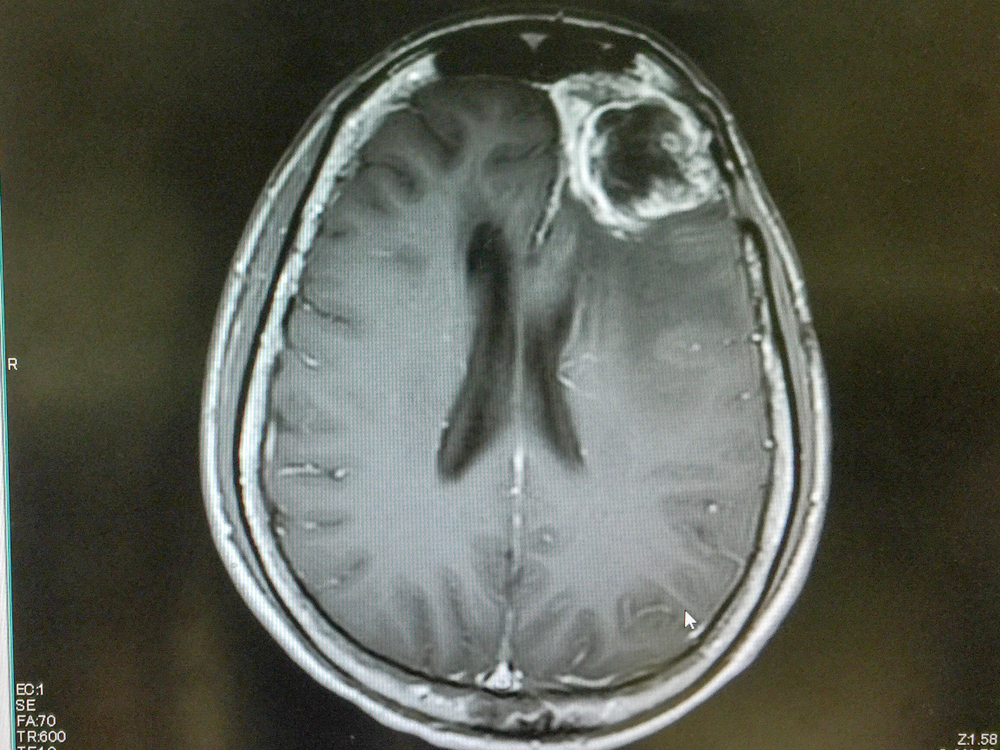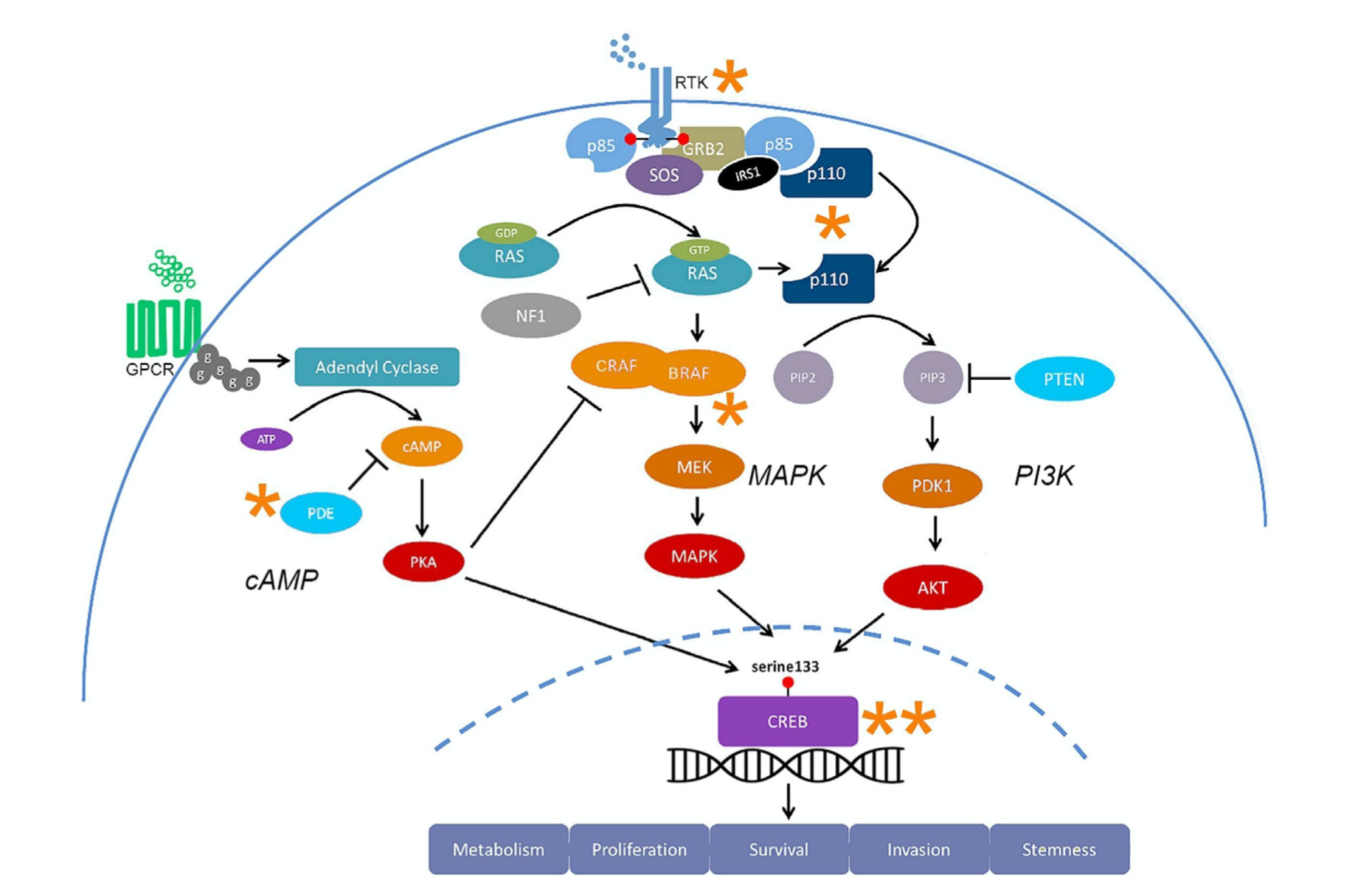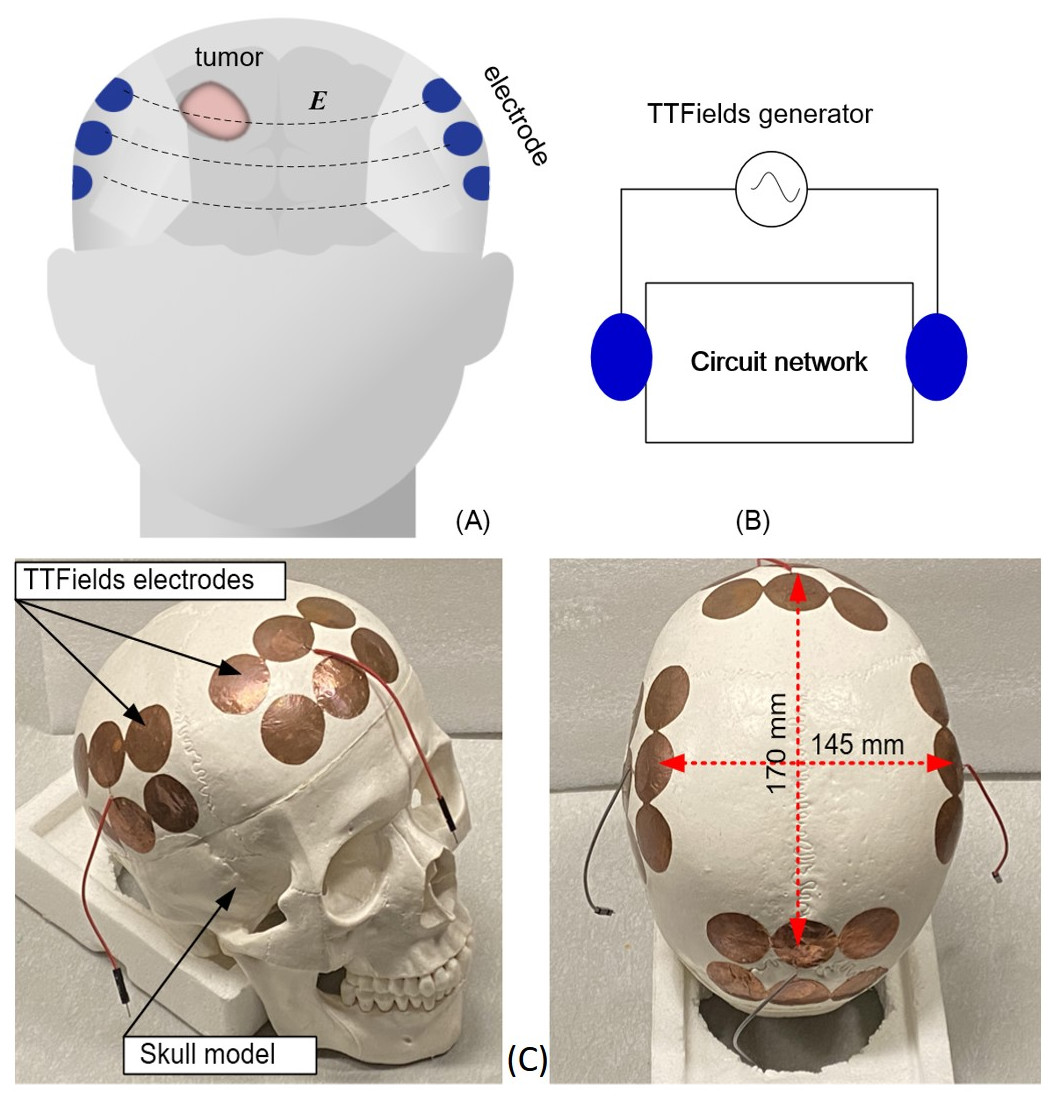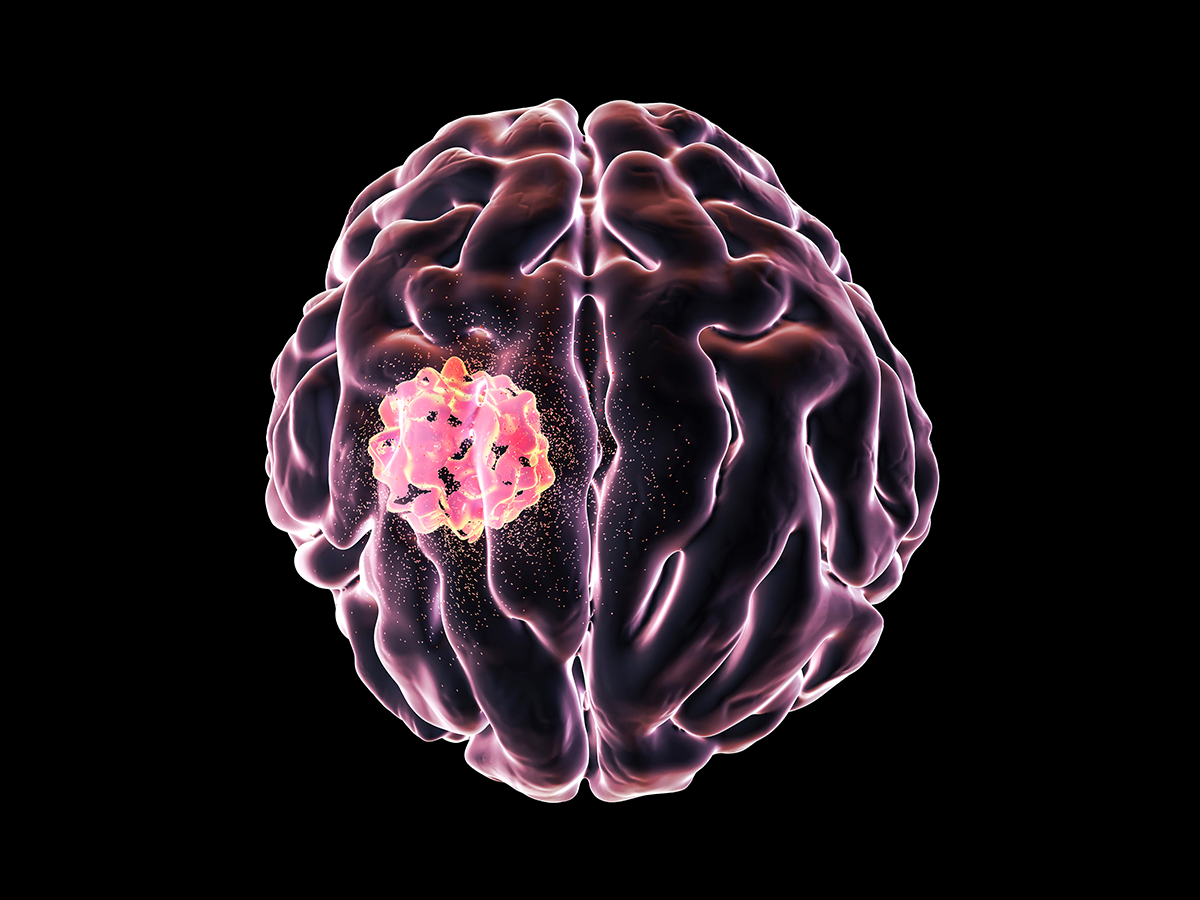What is Glioblastoma?
Glioblastoma (GBM) is a type of cancer that forms in the brain or spinal cord. GBM forms from astrocytes that support nerve cells. [1]
Classical GBM
Characterized by amplification or mutation of the EGFR gene. This type typically responds better to aggressive treatment compared to other types.
Mesenchymal GBM
Characterized by mutations of NF1 and PTEN, and mutations of P53 are also common. This type is also responsive to aggressive treatment.
Proneural GBM
Characterized by amplification of chromosome 4q12 and high levels of the PDGFRA gene. IDH1 and TP53 mutations are also typically present in this type. People with this type tend to live longer compared to other types, but it does not respond well to aggressive treatment.
Neural GBM
This type does not have any obvious patterns of mutations or amplifications and typically has the worst prognosis of all types. [2]

Signal Transduction Pathways in Relation to GBM
MAPK
High levels of MAPK signaling are connected to GBM. What could contribute to this is that in the mesenchymal type, NF1 is mutated which typically negatively regulates MAPK signaling by inactivating Ras. Another factor could be that in the classical type, the EGFR gene is amplified which hyperactives MAPK.
PI3K
The PI3K signaling pathway is hyperactive in GBM cases. What could cause this is the mutation of PTEN in the mesenchymal type which typically suppresses PI3K signaling by dephosphorylating PIP3. The EGFR gene amplification typical in the classical type also hyper-activates PI3K signaling.
cAMP
It has been found that cAMP signaling is hypoactive in GBM cases as there are low levels of cAMP and adenylyl cyclase in GBM tumor samples. CREB is a transcription factor that is activated through the cAMP signaling pathway, so if cAMP signaling is suppressed, CREB is inhibited which is connected to tumor growth.
Convergence of pathways
MAPK and PI3K cross regulate each other in many ways. For one, they are both activated by the same receptors and both activated by Ras proteins. ERK, a MAPK pathway, can downregulate PI3K by phosphorylating GAB1 which then reduces the activation of PI3K. ERK can also inhibit PI3K by activating mTOR. PI3K can also downregulate the MAPK signaling pathway by inhibiting Raf through the action of AKT and its phosphorylation of Raf. All three pathways involved, MAPK, PI3K, and cAMP seem to have some link to CREB and its inability to perform correctly which results in the modulation of tumor growth. [2]

Current Treatments for Glioblastoma
Surgery
Surgery can remove some of the tumor but it often spreads to healthy tissue, so typically surgery is not fully effective. After surgery, patients tend to have other treatments done to get whatever is left.
Radiation
Radiation therapy uses energy beams from X-rays or protons to kill cancer cells. Radiation is typically used in combination with chemotherapy.
Chemotherapy
Chemotherapy uses drugs to kill cancer cells and can be taken as a pill or through a vein.
Tumor treating fields (TTF) therapy
TTF uses an electrical field to keep cancer cells from multiplying. [1]

References
[1] Mayo Clinic. (March 7, 2024). Glioblastoma. https://www.mayoclinic.org/diseases-conditions/glioblastoma/cdc-20350148#:~:text=It%20can%20form%20in%20the,can%20happen%20at%20any%20age
[2] Fung, N. H., Grima, C. A., Widodo, S. S., Kaye, A. H., Whitehead, C. A., Stylli, S. S., & Mantamadiotis, T. (2019). Understanding and exploiting cell signalling convergence nodes and pathway cross-talk in malignant brain cancer. Cellular Signaling, 57, 2-9. https://doi.org/10.1016/j.cellsig.2019.01.011
[3] Kwatra, G. (2021, August 30). Glioblastoma: What Every Patient Needs to Know. Glioblastoma Foundation. https://glioblastomafoundation.org/news/glioblastoma-multiforme
[4] Li, X., Oziel, M., & Rubinsky, B. (2022). Evaluating the therapeutic effect of tumor treating fields (TTFields) by monitoring the impedance across TTFields electrode arrays. PeerJ, 10. https://doi.org/10.7717/peerj.12877
